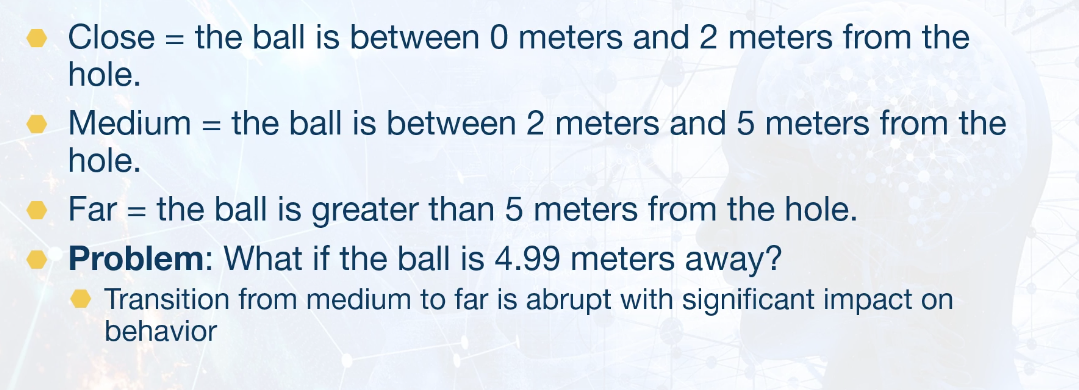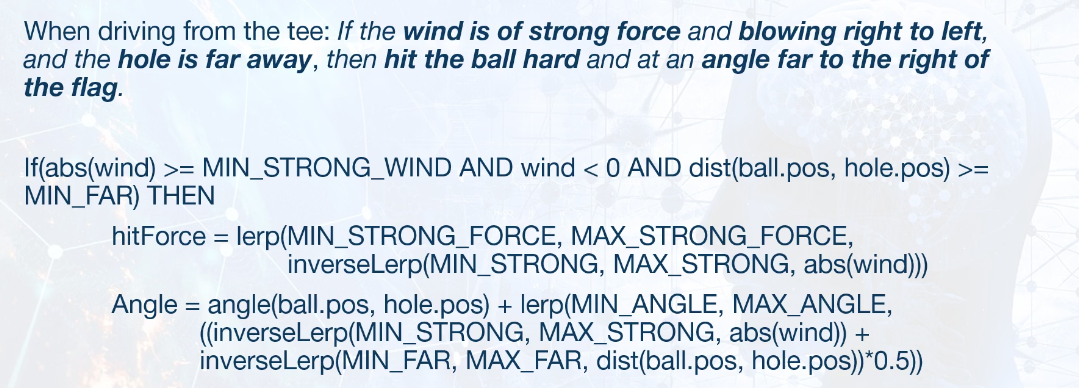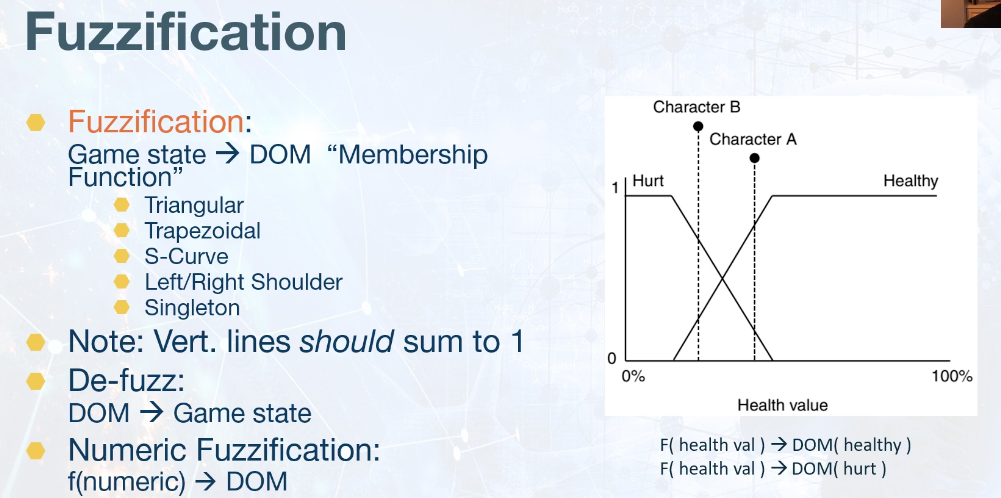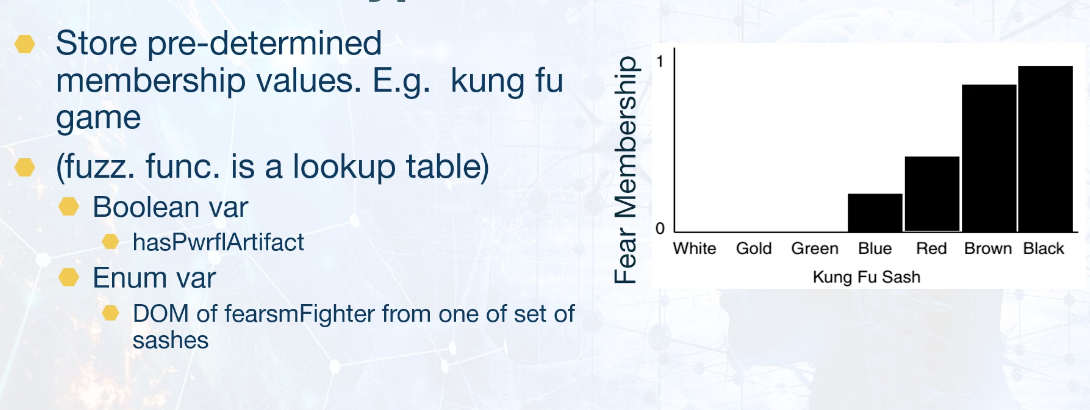Fuzzy logic incorporate truth degrees, vagueness and subjectivity
A linguistic/non-numeric expression of rules and facts.
Allows for use of vague human assessments in computing problems.
Modeling of imprecise concepts
Modeling of imprecise dependencies
Superset of classicial logic
Introduces concept of degree of membership (DOM)
Uses fuzzy sets and fuzzy rules
Although it feels probabilityibased, it is NOT.
# Thermostat Example

# Use cases
- More direct way to represent expertise in linguistic form. Potential for declarative authoring by non-programmers.
- Opportunity to capture expertise (of an expert) but lack the resources to train (NN)
- Flexible behavior design paradigm
- When behavior design efficiency is more important than optimization
- Behaviors can act act on multiple variables without imposing rigid structure to decision making
# Golfing Example



- NOTE: Lerp refers to linear interpolation function, and Inverse Lerp is the inverse operation of the lerp. Inverse Lerp can be used to determine what the input to a Lerp was based on its output. For example, the value of a Lerp between 0 and 2 with a T value of 1 is 0.5. Therefore the value of an Inverse Lerp between 0 and 2 with a T value of 0.5 is 1.
# Fuzzy Sets
- Degree of Membership (DOM)
- Instead of predicates being true or false like in boolean logic, there is a normalized value specifying degree of membership
- For example: IsInjured(agent) == 0.7. The value is not a probability or a percentage, it is only the degree to which the agent is a member of IsInjured
- Some traits that one might expect to be mutually exclusive in traditional boolean logic can simultaneously present non-zero degrees of membership. For eg:
- isHealthy(agent) == DOM(0.3)
- isInjured(agent) == DOM(0.7)
- When multiple DOMs are non-zero, it makes sense that DOM should sum to 1.0. However, a weighted average is often sufficient for good results
# Flow
- Crisp, discrete input values
- Fuzzification
- Fuzzy boundaries (partial membership) described by "Membership functions"
- Fuzzy Rules
- If antecedent THEN consequent (where antecedent has DOM, and consequent fires by degree)
- Defuzzification
- Combines consequents fired into a crisp value
- Crisp, discrete output values
# Fuzzy Inference
- For each rule,
- For each antecedent, calculate the degree of membership of the input data
- Calculate the rule's inferred conclusion based upon the values in previous step
- Combine all inferred conclusions into a single conclusion (A fuzzy set)
- For crisp values, the conclusion from 2 must be defuzzified
# Fuzzy Rules
- Relate the known membership of certain fuzzy sets to generate new DOM values for other (output) fuzzy sets
- Must create rule for each possible combination of antecedent sets
- E.g. "If I a close to the corner AND I am traveling fast, then I should brake"
- Membership of
should brakewithclose-to-corner0.6 andtraveling-fastof 0.9?
# Fuzzification

# Example membership functions

# Small sets and enumerated types

# Set operations
- Hedge: VERY =
- Hedge: FAIRLY =
